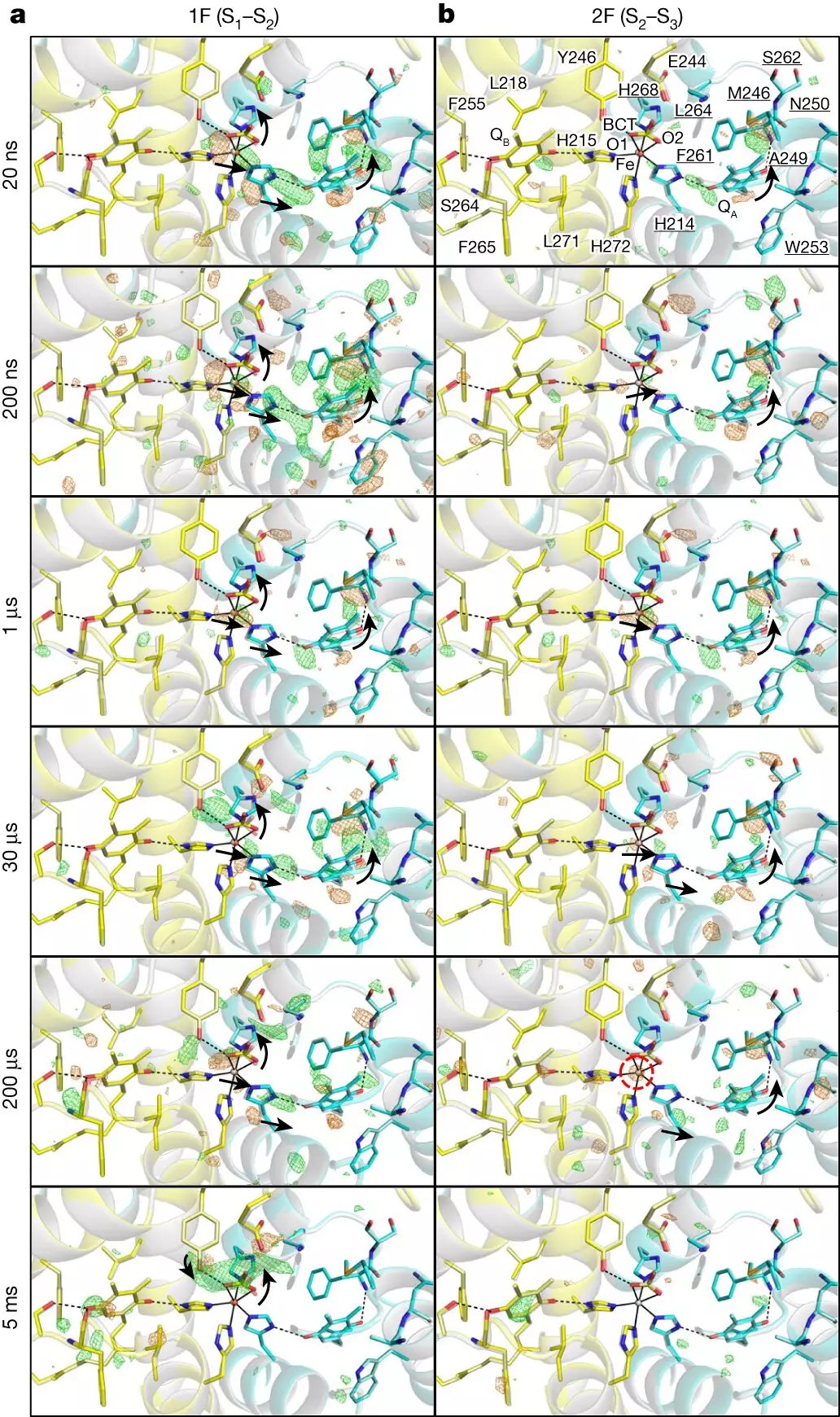The molecular mechanisms behind photosynthesis are crucial for advancements in biotechnology and renewable energy. Photosystem II (PSII) is a key protein complex in this process, responsible for oxidizing water and producing dioxygen using sunlight. Despite extensive research, there are gaps in our understanding of the structural dynamics of PSII during the water-splitting reaction, particularly on short timescales at the atomic level.
Professors Michihiro Suga and Jian-Ren Shen from Okayama University in Japan utilized pump-probe serial femtosecond X-ray crystallography (TR-SFX) to investigate these ultrafast structural changes in PSII. By meticulously preparing PSII microcrystals and subjecting them to laser flashes and femtosecond X-ray pulses, the researchers were able to track minor structural alterations ranging from nanoseconds to milliseconds post-flash illumination.
The findings, published in Nature, shed light on the transitions from the S1 to S2 and S2 to S3 states in PSII, providing insights into electron transfer, proton release, and substrate water delivery. Rapid structural alterations in the YZ tyrosine residue were observed, indicating fast electron and proton transfer processes. Additionally, the movement of a water molecule near Glu189 of the D1 subunit, known as O6, provided valuable insights into the origin of the oxygen atom incorporated during the water-splitting reaction.
Professor Jian-Ren Shen emphasizes the significance of these findings in catalyst design for artificial photosynthesis. Understanding the molecular mechanisms of water oxidation in PSII can inspire the development of synthetic catalysts for harnessing solar energy efficiently. Furthermore, insights into the structural dynamics of PSII can inform strategies for optimizing natural photosynthetic processes in crops, enhancing agricultural productivity, and mitigating the impacts of climate change.
The research conducted by Professors Suga and Shen opens up new avenues for exploring the complex interplay between proteins and water molecules in PSII, offering promising solutions for energy sustainability and environmental conservation. By unraveling the secrets of photosynthesis at the molecular level, we are one step closer to addressing some of the most pressing global challenges of our time.



Leave a Reply